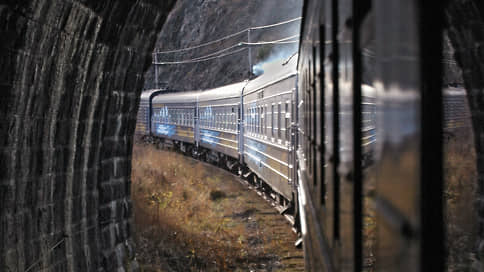BAM looks into private tunnels – Newspaper Kommersant No. 231 (7432) of 12/13/2022
[ad_1]

The Ministry of Transport confirmed that in 2023 it is possible to conclude the first concession agreements at the BAM. The objects will be expensive artificial structures – three tunnels and a bridge across the Amur, worth about 600 billion rubles. The desire to build them on the basis of concessions was expressed by Ruslan Baysarov’s Bamtonnelstroy-Most and Gazprombank. Russian Railways last year decided not to include facilities in the program for the third stage of the expansion of the BAM and the Trans-Siberian Railway, limiting itself to a more modest investment program. But now, according to experts, spending can be justified: any infrastructure is needed that expands the route to the east.
The Ministry of Transport confirmed that the involvement of the concessionaire in the construction of the Eastern landfill is being considered for four facilities at BAM. According to Deputy Minister of Transport Valentin Ivanov, we are talking about the second Severomuysky, Kuznetsovsky and Kodarsky tunnels and the bridge across the Amur.
That it is planned to adopt the concession initiative of Bamtonnelstroy-Most (BTS-Most) of Ruslan Baysarov and Gazprombank for these facilities, “Kommersant” wrote November 21. According to Kommersant, we are talking about commissioning facilities until 2032 and a total cost of about 650 billion rubles.
Mr. Ivanov specified that the amount should be about 600 billion rubles. According to him, a separate company has been created for each of the objects.
“From this company — a consortium of banks and an investor — quotes Deputy Minister of RIA Novosti. – A separate SEC, a separate legal entity, has been made for each volume. He expects the first concession agreements to be concluded as early as 2023.
The idea of building a second Severomuysky tunnel, which would expand the capacity of the first, longest railway tunnel from 16 million to 100 million tons, was proposed in August 2018 by the commission on the fuel and energy complex under the president (see “Kommersant” dated August 30, 2018). According to Russian Railways, it would take ten years to build, and the Institute for Economics and Transport Development estimated the project at 261 billion rubles. (see “Kommersant” dated November 26, 2018). “Sibanthracite” Dmitry Bosov expressed readiness to expand the tunnel in five years and 60 billion rubles. in exchange for priority passage of their cargoes (see “Kommersant” dated July 15, 2019). But after demise Dmitry Bosov in May 2020, the project got up.
Alexander Isaev, then head of Vostokugol Management Company, in an interview with Kommersant about the Severomuysky Tunnel-2 on July 15, 2019:
“Therefore, we set ourselves the task in 2024, on the 50th anniversary of BAM, to launch a tunnel and ensure the transportation of our 50 million tons of coal.”
The construction of the other three facilities, in addition to the Severomuysky Tunnel, was previously envisaged by the most ambitious option for the third stage of the expansion of the BAM and the Trans-Siberian Railway by 240 million tons and 2.55 trillion rubles. (see “Kommersant” dated September 21, 2021). But such an extension was abandoned.
In an interview with “Kommersant” In February, Oleg Belozerov, the head of Russian Railways, said that the then-current plan for the third stage of the Eastern test site for 210 million tons does not imply the construction of the second Severomuysky, Kuznetsovsky tunnels or a bridge across the Amur. “We examined in detail all the bottlenecks and realized that we can carry the necessary volume in the direction of the Sovgavansky junction without the second Kuznetsovsky tunnel, and the Severomuysky tunnel is needed if the throughput increases when we drive from the west,” he explained, noting that a cheaper option is being considered – increasing the frequency of trains passing through the Severomuysky tunnel.
However, in the end, Ruslan Baysarov proposed to implement these projects in cooperation with Gazprombank: in March, the partners sent a letter to the president with a proposal to implement the project for the construction of the Eastern landfill on a turnkey basis on a concession basis by 2035 with its expansion to 260-280 million tons (see “Kommersant” dated June 1). As a result of the WEF, the president instructed the government, together with Russian Railways and BTS-Most, to consider the issue of increasing the pace of construction of the Eastern test site, including using the concession mechanism.
According to Mikhail Burmistrov, head of Infoline-Analytics, it has now become obvious that these expensive projects are necessary and cost-effective – simply because the lifting of sanctions in the coming years is extremely unlikely and therefore all projects that increase the volume of export to the east are needed.
He notes that state-owned banks curtailed foreign business and reconsidered the risks of financing large infrastructure projects. At the same time, he draws attention to the fact that two new factors have appeared that significantly improve the prospects for the payback of these projects: the fact that the cargo base has become virtually guaranteed, and a sharp jump in railway tariffs, which in January 2023 to December 2021 will increase by 30% in general and more than 75% for coal exports.
[ad_2]
Source link





